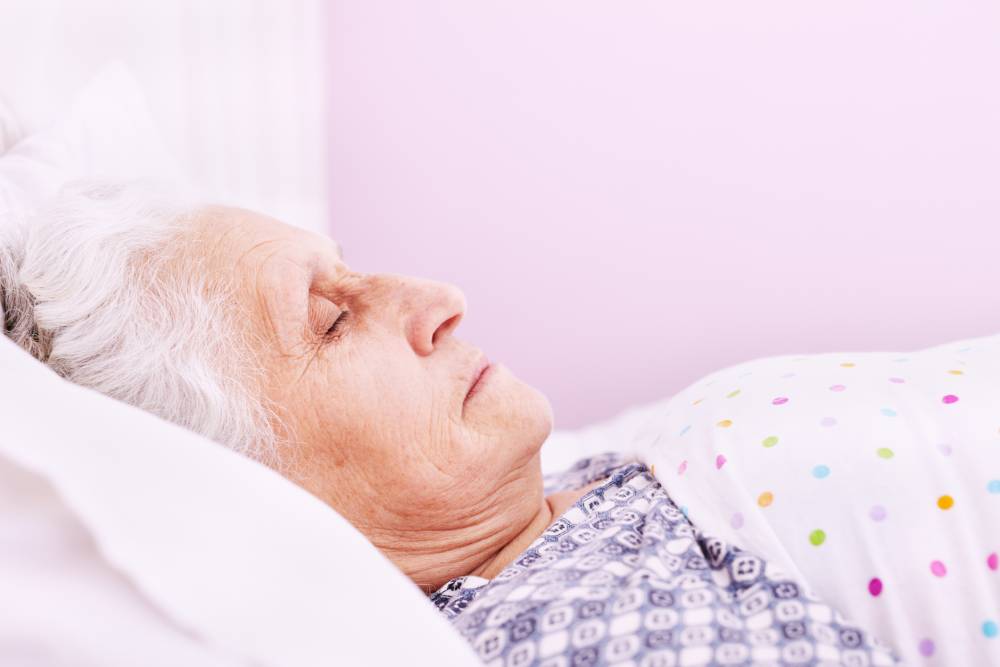
Most of us will not have experienced what it is like to be with a person when they die, and we know little about what actually happens in the lead up and at the actual point of death.
Many of us may approach the death of a close friend or relative with a degree of fear, perhaps in part because we don’t know what to expect.
Talking about what happens when someone dies is almost taboo.
But by understanding and being able to recognise the stages that lead to death, we may be able to approach the situation with more confidence, and be in a better position to provide comfort and support to the person who is approaching the end of their life.
In the days before they die, a person’s organs shut down one by one.
Usually, an early sign that a person will die soon is that they will stop eating. They will lose interest in food and won’t feel thirsty. As a consequence, bowel movements stop and the small amount of urine they produce is a dark colour.
In effect, the digestive system is ‘shutting down’.
Next, conscious awareness closes down – the person may drift in and out of consciousness.
The person may not have enough energy to follow conversations or speak. They may appear to be asleep and not listening to what is going on around them. Sometimes the person may speak to someone who isn’t there, or observe things in the room that others haven’t noticed.
The sense of hearing is one of the last senses to go, which means they might like hearing the quiet conversations of loved ones going on around them, and they can be reassured by loving and kind words right up until the end of their life.
The sense of touch is also usually felt right up until the very end of life. Holding hands, gentle foot massages, or wiping the brow are things you can do to provide comfort and some pleasure.
The heart and lungs gradually slow down in the final days.
The lungs may begin to fill with fluid, so breathing can begin to sound ‘crackly’ – this doesn’t appear to cause distress to the patient but can be treated with medication if necessary.
In the last few hours or days, both the breathing and heartbeat become irregular. Breathing may go from being fast and shallow, to being drawn out. At the very end of life, the person can have gaps of as long as 60 seconds between breaths. Watching this drawn out breathing can be distressing for family to watch, but it doesn’t cause the person distress.
Sometimes when a person is close to death, the family might be inclined to call an ambulance. While it is understandable to be concerned about someone dying at home, a move to hospital at this stage can be uncomfortable and exhausting for the person involved. You can ask a nurse or doctor for advice if you are unsure.
Fingernails, lips, and toenails may become blue or grey in the very final stages of life. Hands and feet can become cold. The body’s internal thermostat is shutting down, which can mean the person sweats profusely. If the person seems to be uncomfortable, you can remove bed covers to cool them down.
Sometimes death can be accompanied by a strong odour. Keep the person clean, open windows, or burn scented candles.
People who are very close to death with sometimes call out, or make involuntary movements such as throwing up their arms.
Sometimes the final moment is accompanied by a shudder or a sigh, but often it is just a matter of the last drawn out breath not being followed by another breath.
At the point of death, the mouth may open slightly; the eyes may stay open too.
You do not have to immediately report a death, simply recording the time is enough. From this point on, as soon as you begin to include the outside world, you limit the time you have with the body. You may feel you want to spend some time with the body to reflect on the person and on what has just occurred.
At some point you will call friends and family, and the mortician. Two morticians will generally come to take the body, removing it in a leather bag, and take it to the mortuary. They may ask you some questions about what occurred.
It can feel very strange once the body is taken away, and after all the emotion associated with being with someone in their final moments, it’s not uncommon to feel a degree of numbness at first. Feelings of grief, anger, and relief are also common.
If you feel you are too upset to call friends and family, you might consider asking someone close to you to do it.
How you can help someone at the end of their life:
Read more on HelloCare about the end of life: Designing a Good Death in Aged Care.